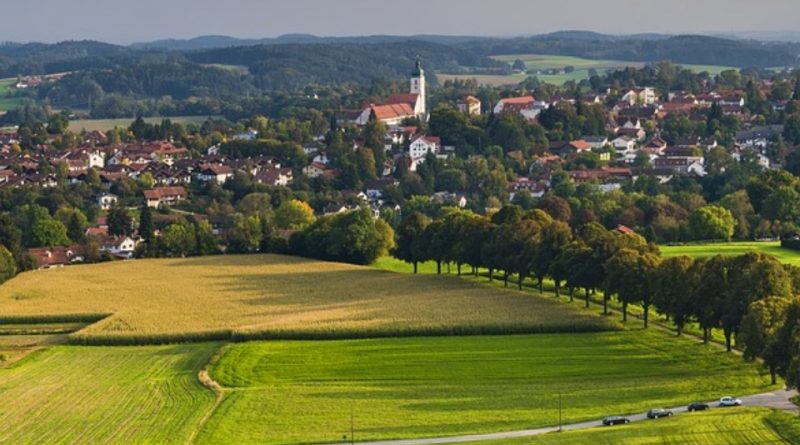Trees and vegetation for the cities of the future
Trees and vegetation for the cities of the future
The criteria with which we built and built the cities where we live are the result of an incorrect anthropological vision.
In recent times, the cities of our planet have increasingly moved away from the principles on which the ecosystem is based and, nowadays, we find ourselves dealing with population centers full of smog, with poorly liveable environmental conditions, especially in the summer period, and very low quality of life.
Humanity has thus distanced itself from itself by hypothesizing a model of civilization alienated from the principles and constants of nature.
The ecosystem of which we are part and together has remained outside and us out of it.
Thus the lack of trees, vegetation and more natural conditions have diminished all those “services” of their relevance.
Trees (and vegetation in general) are natural filters for air, thanks to the process of chlorophyll photosynthesis which absorbs carbon dioxide and produces oxygen. Moreover, especially in large population centers, they retain a large amount of particulate, through their leaves and their surfaces.
An important role is also that of gas exchanges. The leaf stomas, present on the underside of the leaf, allow the gaseous exchange between the inside and the outside: thus the plants absorb and remove the gaseous pollutants through its metabolism. The process of absorption and metabolization of pollutants is then completed by the organisms that live in the earth, in contact with the roots of the plant.
The well-groomed and well-trimmed trees are a major center for absorbing pollutants.
Another great role, assured above all by large trees, is that of climate mitigation.
Ibimet (Institute of biometeorology of the CNR of Bologna) has carried out in-depth studies on the mitigation of the urban climate through the use of trees in the city.
Let’s look at some features that emerged from this study.
The hackberry (Celtis australis) has been shown to have the best performance against fine particles. In the absorption of CO2 the wild linden (Tilia cordata), the hawthorn (Crataegus monogyna) and the ash (Fraxinus ornus) have proved to be excellent.
In general, comuqnue, the best species that can withstand the strong urban pollution are the autochthonous ones and those of the local flora such as common ash, orniello, hawthorn, field maple, platanoid maple, mountain maple (Acer pseudoplatanus), bagolaro, Judas tree ( Cercis siliquastrum), mulberry, black alder, white hornbeam, linden and elm.
Wild linden, ash and hawthorn are some of the essences that offer the maximum assimilation of carbon dioxide per square meter of leaves. While for the fine powders the elms, the horse-chestnuts and the maples are also particularly suitable, in addition to the linden trees.
To have a measure of the absorption capacity of these plants, just think that five thousand plants in a year absorb 228 kilos of PM10: equal to the emissions of over a thousand machines that cover 20 thousand kilometers in 12 months.
Absolutely the linden is one of the essences that offers the maximum assimilation of carbon dioxide per square meter of leaves.
There are also Mediterranean shrubs that optimally metabolize heavy metals and particulates. A study by CREA (Council for Agricultural Research and Analysis of Agricultural Economics) identified some essences that were excellent for creating hedges or higher shrub barriers against smog: the holly (Ilex aquifolium), the viburnum (Viburnum L.), the strawberry tree (Arbutus unedo), the photinia (Photinia serrulata), the laurel (Laurus nobilis), the eleagnus (Elaeagnus), the privet (Ligustrum lucidum).
The reconversion and design of the cities of the future will have to take into account the creation of barriers and filters that take into account the areas where traffic is concentrated, thermal plants and industrial combustion, in order to mitigate the emission of harmful substances such as fine dust and heavy metals.
Thus trees and vegetation will have to bring us back to an anthropological condition of greater balance with significantly better social and quality of life impacts.
In fact, the presence of vegetation, in addition to the antismog role, is particularly effective for the direct reduction of carbon dioxide and for the improvement of the microclimate. In general, there is a reduction in the use of fossil fuels of around 18 kilos per year for each tree. Each plant planted in an urban environment carries out an action of CO2 reduction equivalent to that of 3 – 5 forest trees of equal size.
But the “services” of our green friends do not end here.
Plants have the great ability to intercept, for example, one of the most harmful heavy metals; let’s talk about lead. This heavy metal is one of the most dangerous elements for human health and is intercepted differently by different species of plants: among these, the greatest foliar deposition values were found in the eleagno, in the privet and in the glossy viburnum.
Various tests have shown that the deposition of pollutants on the leaves has progressively increased between June and August, in a period of absence of rains, while it has decreased with the occurrence of the first autumn rains that evidently washed away part of the deposit. From the microscopic analysis on the leaves it emerged that the eleagno is the best accumulator, with 0.60 per cent of the “covered” leaf area, while the privet, with 0.27 per cent, registered the lowest value. .
Beyond the analysis and the ability of each individual plant to perform a useful service for humanity, there is also the relationship between these and the human being, which is completed in much more complex aspects such as the emission of substances which, as diversified information, they make human life much fuller and more stable.
Perhaps the tower of Babel that we have built in recent times is starting to collapse due to the mistaken vision of an impossible human evolution that has now come to an end.
Guido Bissanti

